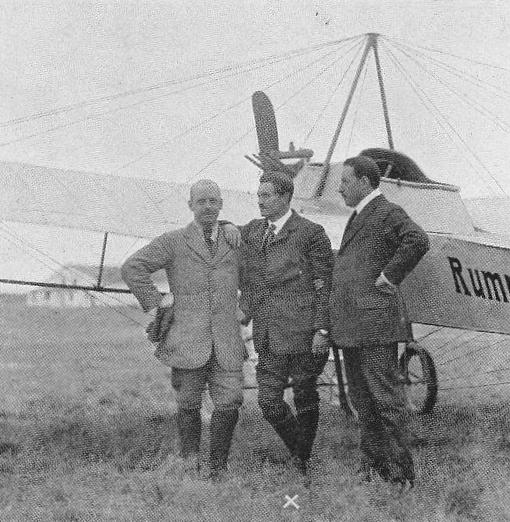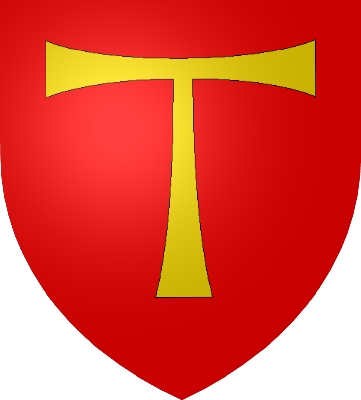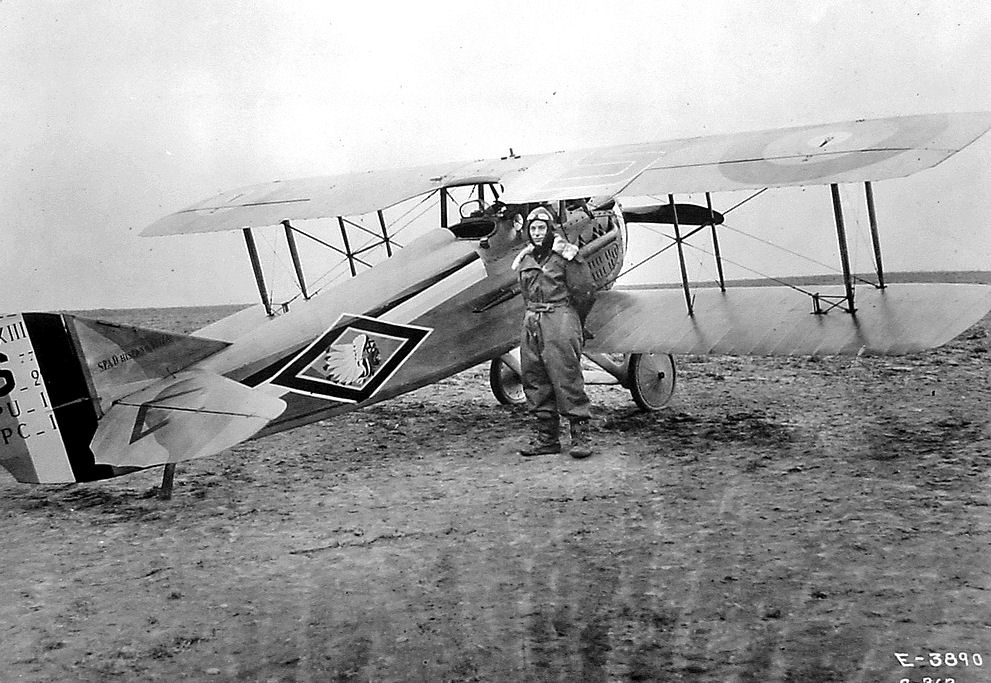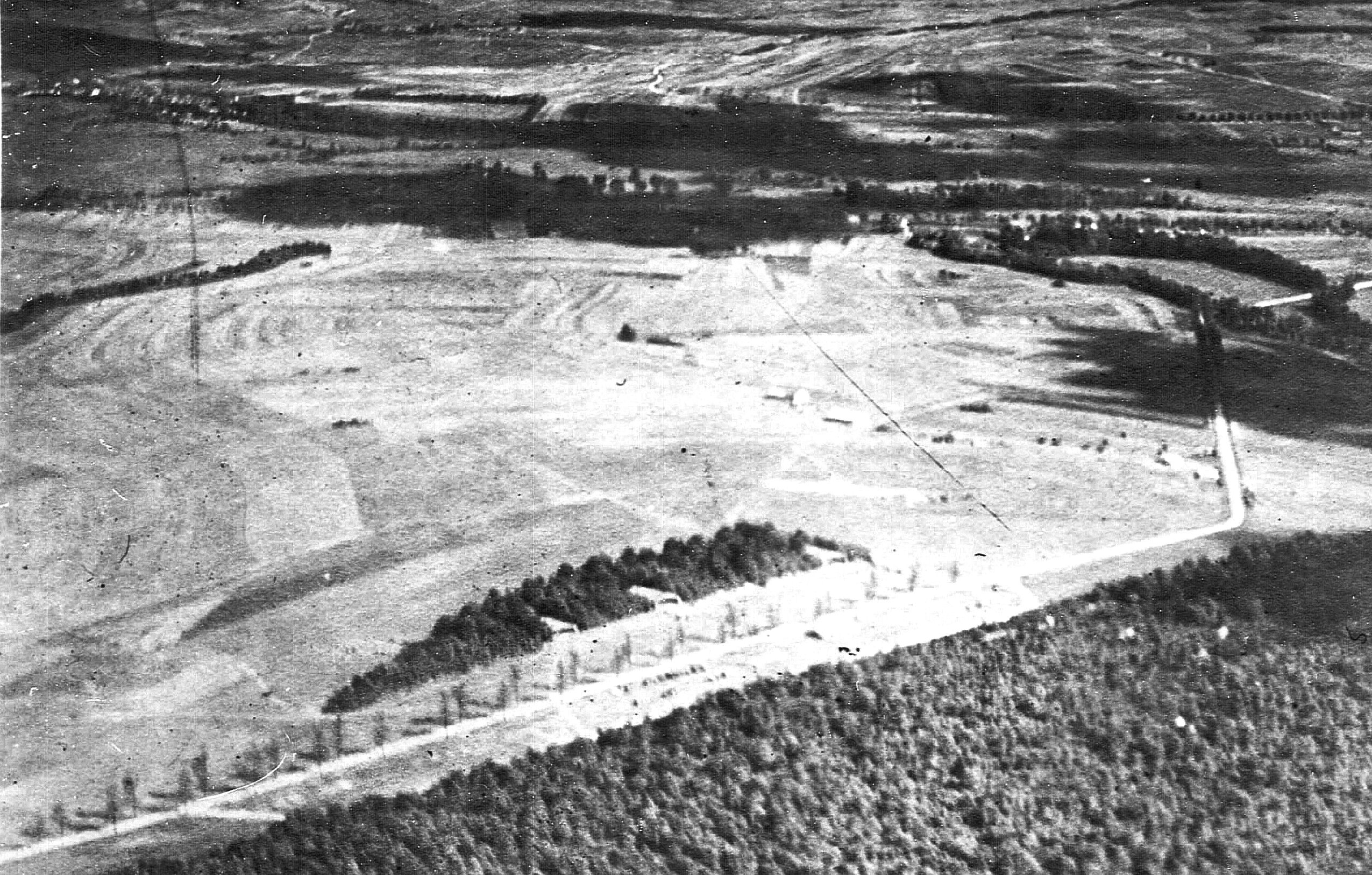|
49th Aero Squadron
The 49th Aero Squadron was a United States Army Air Service unit that fought on the Western Front during World War I. The squadron was assigned as a Day Pursuit (Fighter) Squadron as part of the 2d Pursuit Group, First United States Army. Its mission was to engage and clear enemy aircraft from the skies and provide escort to reconnaissance and bombardment squadrons over enemy territory. It also attacked enemy observation balloons, and perform close air support and tactical bombing attacks of enemy forces along the front lines. After the 1918 Armistice with Germany, the squadron returned to the United States in March 1919 and was demobilized. On 16 October 1936, the World War I Aero squadron was consolidated with the United States Army Air Corps 49th Bombardment Squadron to preserve the lineage and history of the unit. Today, the United States Air Force 49th Test and Evaluation Squadron performs flight testing at Barksdale Air Force Base, Louisiana. [...More Info...] [...Related Items...] OR: [Wikipedia] [Google] [Baidu] |
US Army Air Roundel
The United States of America (U.S.A. or USA), commonly known as the United States (U.S. or US) or America, is a country primarily located in North America. It consists of 50 states, a federal district, five major unincorporated territories, nine Minor Outlying Islands, and 326 Indian reservations. The United States is also in free association with three Pacific Island sovereign states: the Federated States of Micronesia, the Marshall Islands, and the Republic of Palau. It is the world's third-largest country by both land and total area. It shares land borders with Canada to its north and with Mexico to its south and has maritime borders with the Bahamas, Cuba, Russia, and other nations. With a population of over 333 million, it is the most populous country in the Americas and the third most populous in the world. The national capital of the United States is Washington, D.C. and its most populous city and principal financial center is New York City. Paleo-Americ ... [...More Info...] [...Related Items...] OR: [Wikipedia] [Google] [Baidu] |
Kelly Field
Kelly Field (formerly Kelly Air Force Base) is a Joint-Use facility located in San Antonio, Texas. It was originally named after George E. M. Kelly, the first member of the U.S. military killed in the crash of an airplane he was piloting. In 2001, pursuant to BRAC action, the former Kelly AFB runway and land west of the runway became "Kelly Field" and control of this reduced size installation was transferred to the adjacent Lackland Air Force Base, part of Joint Base San Antonio. The base is under the jurisdiction of the 802d Mission Support Group, Air Education and Training Command (AETC). Kelly Field was one of thirty-two Air Service training camps established after the United States entry into World War I, being established on 27 March 1917. It was used as a flying field; primary flying school; school for adjutants, supply officers, engineers; mechanics school, and as an aviation general supply depot. Kelly Air Force Base and its associated San Antonio Air Logistics Ce ... [...More Info...] [...Related Items...] OR: [Wikipedia] [Google] [Baidu] |
Fokker
Fokker was a Dutch aircraft manufacturer named after its founder, Anthony Fokker. The company operated under several different names. It was founded in 1912 in Berlin, Germany, and became famous for its fighter aircraft in World War I. In 1919 the company moved its operations to the Netherlands. During its most successful period in the 1920s and 1930s, it dominated the civil aviation market. Fokker went into bankruptcy in 1996, and its operations were sold to competitors. History Fokker in Germany At age 20, while studying in Germany, Anthony Fokker built his initial aircraft, the ''Spin'' (Spider)—the first Dutch-built plane to fly in his home country. Taking advantage of better opportunities in Germany, he moved to Berlin, where in 1912, he founded his first company, Fokker Aeroplanbau, later moving to the Görries suburb just southwest of Schwerin (at ), where the current company was founded, as Fokker Aviatik GmbH, on 12 February 1912. World War I Fokker capitalized o ... [...More Info...] [...Related Items...] OR: [Wikipedia] [Google] [Baidu] |
Bar-le-Duc
Bar-le-Duc (), formerly known as Bar, is a commune in the Meuse département, of which it is the capital. The department is in Grand Est in northeastern France. The lower, more modern and busier part of the town extends along a narrow valley, shut in by wooded or vine-clad hills, and is traversed throughout its length by the Ornain, which is crossed by several bridges. It is limited towards the north-east by the Marne–Rhine Canal, on the south-west by a small arm of the Ornain, called the ''Canal des Usines'', on the left bank of which the upper town (''Ville Haute'') is situated. The highly rarefied Bar-le-duc jelly, also known as Lorraine jelly, is a spreadable preparation of white currant or red currant fruit preserves, hailing from this town. First referenced in the historical record in 1344, it is also colloquially referred to as "Bar caviar". History Bar-le-Duc was at one time the seat of the county, from 1354 the Duchy of Bar. Though probably of ancient origin, the ... [...More Info...] [...Related Items...] OR: [Wikipedia] [Google] [Baidu] |
Belrain Aerodrome
Belrain Aerodrome was a temporary World War I airfield in France. It was located South of Belrain, in the Meuse department in the Lorraine region in northeastern France. Overview Construction of Belrain Aerodrome was originally started by the French "Aeronautique Militaire" on the plateau between Belrain and Erize-la-Brulée, with a few escadrilles stationed between August 1917 and August 1918. When turned over to the Air Service, United States Army in August 1918, the airfield could shelter 86 aircraft in eight "Bessonneau" aircraft hangars; there was no telephone or electrical system, and the Air Service engineers from a detachment of the 484th Aero Squadron (Construct.) put up a series of tents for personnel to live, eat and perform their duties in the early days of September.Series L, Miscellaneous Sections of the Air Service, Volume 11, History of the Design and Projects Section of the Construction Division, Gorrell's History of the American Expeditionary Forces Air Servi ... [...More Info...] [...Related Items...] OR: [Wikipedia] [Google] [Baidu] |
Rumpler
Rumpler-Luftfahrzeugbau GmbH, Rumpler-Werke, usually known simply as Rumpler was a German aircraft and automobile manufacturer founded in Berlin by Austrian engineer Edmund Rumpler in 1909 as Rumpler Luftfahrzeugbau.Gunston 1993, p.259 The firm originally manufactured copies of the Etrich Taube monoplane under the ''Rumpler Taube'' trademark, but turned to building reconnaissance biplanes of its own design through the course of the First World War, in addition to a smaller number of fighters and bombers.Kroschel & Stützer 1994, p.100 The company, from the beginning a limited liability concern ( GmbH), became a Aktiengesellschaft in the style of ''Rumpler-Werke AG'' on 21 September 1917 with a capitalization of 3,5 million Marks. In 1918, 3300 people worked for RumplerRumpler 1919, p.63 at the Berlin headquarter and a subsidiary in Augsburg, the ''Bayerische Rumpler-Werke AG''. As a consequence of the Treaty of Versailles Germany was not allowed to manufacture aircraft. Rump ... [...More Info...] [...Related Items...] OR: [Wikipedia] [Google] [Baidu] |
Toul
Toul () is a commune in the Meurthe-et-Moselle department in north-eastern France. It is a sub-prefecture of the department. Geography Toul is between Commercy and Nancy, and the river Moselle and Canal de la Marne au Rhin. Climate Toul has a oceanic climate (Köppen climate classification ''Cfb''). The average annual temperature in Toul is . The average annual rainfall is with June as the wettest month. The temperatures are highest on average in July, at around , and lowest in January, at around . The highest temperature ever recorded in Toul was on 11 August 1998; the coldest temperature ever recorded was on 9 January 1985. History Toul was known to the Romans as , and was the capital of the Gaulish tribe of the Leuci. In 550, King Theudebald convoked a synod at Toul. In 612, King Theudebert II of Austrasia was defeated by King Theuderic II of Burgundy near Toul. By the Treaty of Meerssen of 870, Toul became part of East Francia, the later Holy Roman Empire. Du ... [...More Info...] [...Related Items...] OR: [Wikipedia] [Google] [Baidu] |
Gengault Aerodrome
Toul-Croix De Metz Airfield is a former military airfield which is located approximately northeast of Toul (Département de Meurthe-et-Moselle, Lorraine); east of Paris. The airfield had its probable origins as early as 1912, as an ''Aéronautique Militaire'' airfield, later being extensively used by the United States Army Air Service. It became a permanent airfield between the wars and during the Phony War with Nazi Germany (1939–1940) was the home of G.C. II/5 (The French Air Force descendant of the World War I Lafayette Escadrille) equipped with American Curtis Hawk 75A fighters. Seized in the Battle of France, it became a Luftwaffe airfield until being captured by the United States Third Army in September 1944. It then became a United States Army Air Forces combat airfield until the end of the war. After the war, the airfield was redeveloped into a private industrial estate. History World War I Archives concerning the origins of the Toul-Croix de Metz airfield are ra ... [...More Info...] [...Related Items...] OR: [Wikipedia] [Google] [Baidu] |
SPAD XIII
The SPAD S.XIII is a French biplane fighter aircraft of the First World War, developed by ''Société Pour L'Aviation et ses Dérivés'' (SPAD) from the earlier and highly successful SPAD S.VII. During early 1917, the French designer Louis Béchereau, spurred by the approaching obsolescence of the S.VII, decided to develop two new fighter aircraft, the S.XII and the S.XIII, both using a powerful new geared version of the successful Hispano-Suiza 8A engine. The cannon armament of the S.XII was unpopular with most pilots, but the S.XIII proved to be one of the most capable fighters of the war, as well as one of the most-produced, with 8,472 built and orders for around 10,000 more cancelled at the Armistice.Sharpe 2000, p. 272. By the end of the First World War, the S.XIII had equipped virtually every fighter squadron of the ''Aéronautique Militaire''. In addition, the United States Army Air Service also procured the type in bulk during the conflict, and some replaced or supplem ... [...More Info...] [...Related Items...] OR: [Wikipedia] [Google] [Baidu] |
Vaucouleurs Aerodrome
'VaucouleursAerodrome, was a temporary World War I airfield in France. It was located West-Northwest of Vaucouleurs, in the Meuse department of France, located approximately from Paris. Overview The airfield was built during the spring of 1918 as a main operating base for the First Army Air Service. Two airfields were built at Vaucouleurs, Vaucouleurs (North) being constructed to the northwest of the village, the support Aerodrome built in a forested area for camouflage west of the airfield in some agricultural fields used for flying. Vaucouleurs (South) was built just to the west of the village; it was to be occupied jointly by American and French squadrons during the St Mihiel Offensive and equipped with several batteries of French landing lights so it could be used for night operations.Series L, Miscellaneous Sections of the Air Service, Volume 11, History of the Design and Projects Section of the Construction Division, Gorrell's History of the American Expeditionary Fo ... [...More Info...] [...Related Items...] OR: [Wikipedia] [Google] [Baidu] |
Issoudun Aerodrome
Issoudun Aerodrome was a complex of military airfields in the vicinity of Issoudun, Centre, France. They were used during World War I as part of the Third Air Instructional Center, American Expeditionary Forces for training United States airmen prior to being sent into combat on the Western Front. It was at that time the largest air base in the world. Today the entire complex consists of agricultural fields, the military facility totally obscured with no trace of its wartime history. History Background By the summer of 1917, two and a half years of the air war had begun to take a serious toll on the number of French and British aviators. While the United States possessed a relatively enormous pool of human resources, she lacked the well developed training methods and aircraft production capabilities of the Allies. In order to maximize the resources of both, the French submitted a memorandum to General George O. Squier, then the Chief Signal Officer of the U.S. Army, suggesting ... [...More Info...] [...Related Items...] OR: [Wikipedia] [Google] [Baidu] |
Castle Bromwich Aerodrome
Castle Bromwich Aerodrome was an early airfield, situated to the north of Castle Bromwich in the West Midlands of England. The site now falls within the City of Birmingham. History Creation to 1937 A large piece of Warwickshire grassland (Castle Bromwich playing fields) became the privately owned Castle Bromwich aerodrome, when Alfred P Maxfield flew the first aeroplane in the Birmingham area in September 1909. In 1911, Bentfield C Hucks flew a Bleriot monoplane and gave passenger flights. The Midland Aero Club established itself, and a hangar was built for the aeroplanes. It became a stopping place during early air races. At the start of World War I the War Office requisitioned the airfield for use by the Royal Flying Corps and flying schools in 1914, when proper roads and buildings were established. In 1915 No. 5 Reserve Aeroplane Squadron was formed, later becoming the No 5 Training Squadron. Nine other Royal Flying Corps and Royal Air Force squadrons resided at the airfiel ... [...More Info...] [...Related Items...] OR: [Wikipedia] [Google] [Baidu] |










